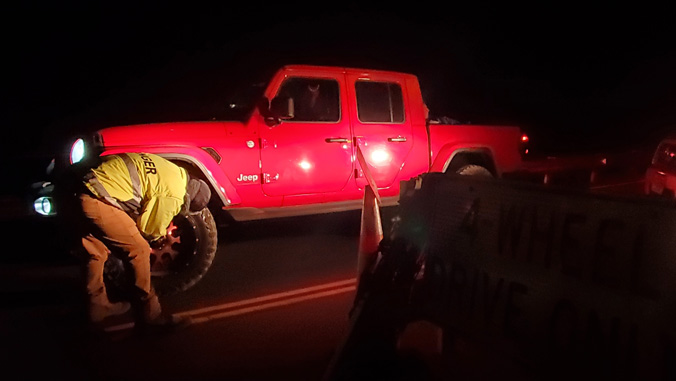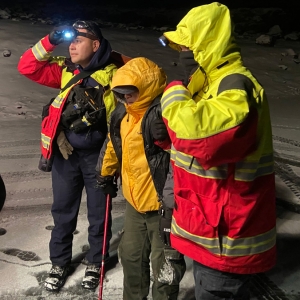
The University of Hawaiʻi Maunakea Rangers are reminding the public to use dependable, fully operable four-wheel drive vehicles when traveling to the summit of Maunakea. On average, the rangers turn around more than 60% of vehicles at the mid-level checkpoint area in front of Halepōhaku after conducting in-depth inspections for proper maintenance, brake checks and screening for invasive species. Drivers are also warned about the eight-mile drive above the 9,200-foot elevation level, which can pose road hazards such as atmospheric and solar glare, blind curves, rock debris and poor traction. Even more hazards can be encountered when descending if low gear isn’t engaged and brakes overheat leading to brake failure even on the newest of vehicles.
The rangers provide emergency assistance to motorists who run into trouble and help with everything from changing tires to providing a little gas to empty gas tanks. In January 2020, Gov. David Ige approved administrative rules for Maunakea lands managed by UH, which enabled the rangers to ban two-wheel drive vehicles from traveling to the summit.

“The mauna can be a very dangerous place where conditions can deteriorate in the blink of an eye, so it is important that the public heed all warnings,” said Nahua Guilloz, director of stewardship at the Center for Maunakea Stewardship. “Our rangers are extremely knowledgeable about the conditions on the mauna and are the first line of defense in the event of an emergency. The nearest first responders are two hours away from the summit area.”
Last winter, rangers trekked for about a mile through heavy snow and sleet to rescue a hiker at 13,000-feet elevation. They also responded to a raging tour van fire halfway up Maunakea Access Road in November 2021 and ensured all passengers were evacuated and brought to safety.
Year-round patrol
The Maunakea Rangers program was established in 2000 to inform visitors about the cultural, natural and scientific significance of the mauna, as well as the hazards. They actively patrol 365 days per year between the mid-level 9,200 foot facilities and the summit, coordinate litter removal, conduct trail maintenance, and inspect the observatories for compliance with Conservation District Use Permits.

